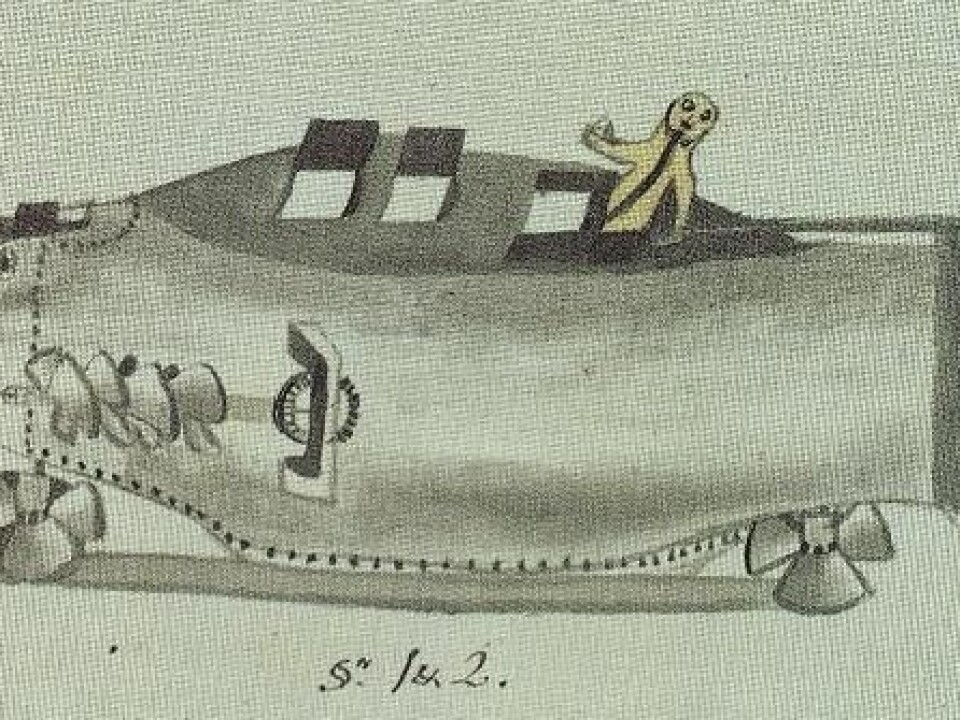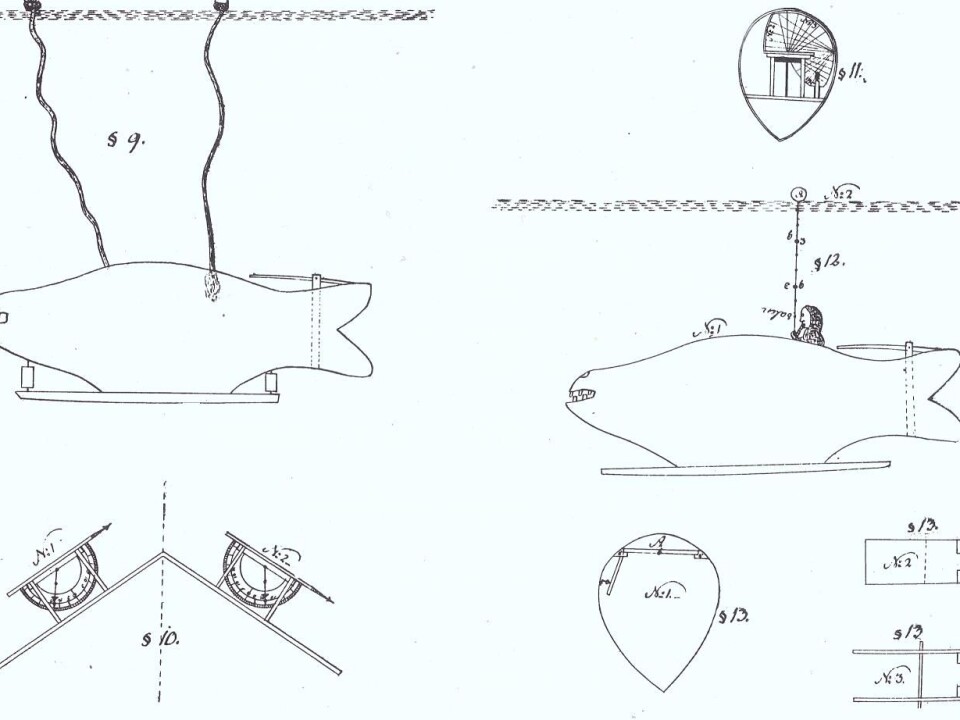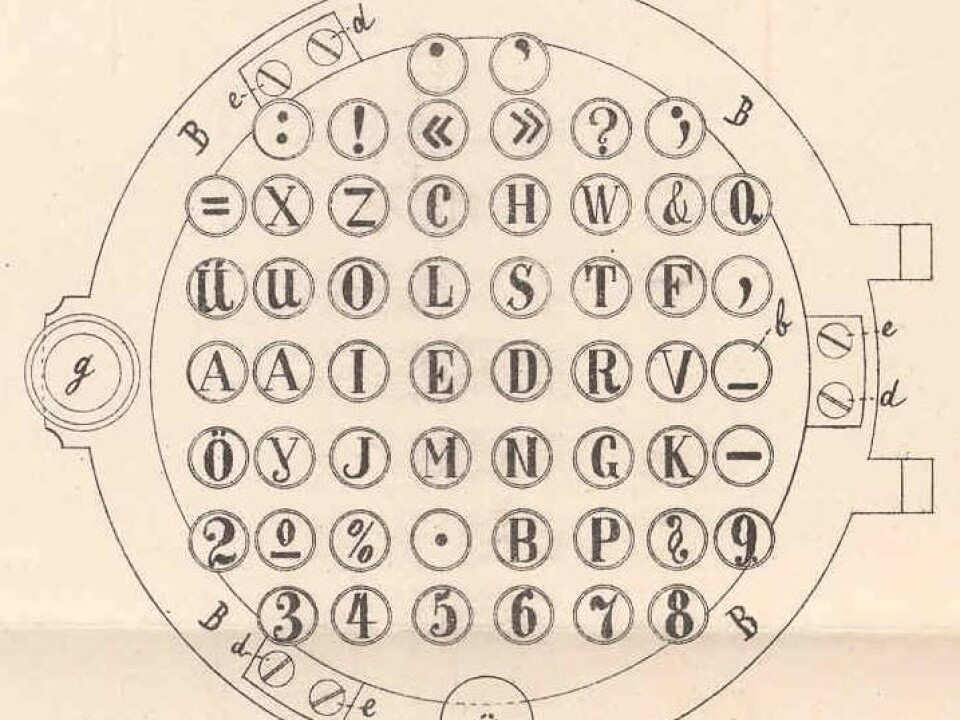
Three brilliant inventions that Denmark ignored
Genial inventions are often surprising. ScienceNordic looks at inventors who did not get the recognition or commercial success they may have deserved.
If people don’t understand your wild plans, or if your ideas suddenly become reality ten years after you thought of them, you’re not alone.
Scientific history in Denmark and other countries has many references to inventors who could have been rich and famous had the world around them been ready for their brilliant ideas. But they were ignored.
ScienceNordic takes a closer look at three ideas that didn’t get the attention they deserve.
‘The Whale’ – an imaginative submarine
In 1808, in his small workshop in Copenhagen, Ole Johansen Winstrup (1782-1867), a guardsman in the army, started to build a model of a propeller-driven submarine that he named ‘Hvalfisken (The Whale)’.

In his patent application, he said the submarine would sail with a diver on board. The diver would then climb out of ‘The Whale’ and drill holes in the submarine’s hull, so the vessel would sink – to form a barrier against naval attack.
In 1807, the year before Winstrup started his project, the Danish fleet was towed away by Britain’s Royal Navy.
Winstrup had probably been a patriot who wanted to prevent a repeat of this scenario, says Frank Allan Rasmussen, a historian who heads the Frederiks Værk Museum of Industry.
“’The Whale’ is a fantastic project,” says Rasmussen. “It’s an early submarine, and the propeller, which powers the vessel, is an example of Winstrup’s ability to think innovatively.”
Crown Prince invited on board

Winstrup’s plan was that the diver should drill many holes in the submarine’s hull and seal each of them with corks; when sufficient holes had been drilled, the diver would remove all the corks and the vessel would sink.
The inventor also had a plan for what the diver should do if the operation to scuttle the submarine was discovered by the enemy: “…should it happen that they send a ship’s carpenter to examine the ship,” Winstrup wrote in his patent application, “then the harpoon shown in the model should be used.”
In a contemporary newspaper report, the inventor invites the young Crown Prince, later King Frederik VI, on a trip in the submarine.
The court naturally rejected the invitation – the Crown Prince must not be subjected to dangers of that sort. And perhaps the inventor’s impudence contributed to Winstrup not being granted a patent for his invention, suggests Rasmussen. The patent authorities rejected Winstrup’s application because of technical shortcomings.

But the same authorities overlooked the brilliance of the submarine’s propellers – which John Ericsson, an inventor living in the USA – was granted a patent for in 1838.
“The propeller was one of the good ideas from ‘The Whale’ that could have been developed further – but as far as we know that never happened,” the historian adds.
Apparatus for quick writing
In 1870, Rasmus Malling Hansen (1835-1890), a priest and principal of the Royal Institute for Deaf-mutes, was granted the sole and exclusive rights to his invention, the ‘Writing Ball’ – one of the first usable typewriters.
Hansen’s interest in the development of the typewriter arose indirectly. As a teacher of deaf-mutes he had started a broad study of Danish speech sounds, or phonemes. This included studying the number of Danish letters that can be spoken and written per second.

“In a given time one can say five times as many sounds as they can be written,” he wrote in his patent application dated 25 January 1870. “In other words, one speaks fives times as fast as one writes.”
This caused him to consider how to find a way of writing faster. He constructed an ‘apparatus for quick writing’, where the letters that are used most often are located on the keyboard where the strongest fingers are.
“The apparatus described will be able to achieve a reasonable usage,” Hansen wrote. “The writing speed will easily be two to three times as fast as normal, and practice in using the apparatus should be able to bring this speed up to speech speed.”
Successful but not commercially
King Christian IX signed Hansen’s patent in 1870. Polyteknisk Læreanstalt – the forerunner of today’s Technical University of Denmark – wrote that the invention was “of great importance” and “quite original”.
The ‘Writing Ball’ won honours at the World Exhibition in 1872 but never became a commercial success. Instead, the market was taken over by an American typewriter brand called Remington, which was patented in 1873.
“At the time, the ‘Writing Ball’ was quicker, but Remington marketed their machines better,” says Rasmussen. “They also developed them, so they became cheaper.”
No manufacturer dared develop the Danish ‘Writing Ball’, and when Hansen died, his typewriter died with him.
Overlooked ‘telescope’
A third invention ignored by contemporary society was made in 1951.
The Danish electrical engineer Holger Møller Hansen (1915-2000) was granted a patent for an invention that is well known today.
He named it ‘fibrescope’, but nowadays it is known as ‘endoscope’. It is a sort of flexible telescope that can show images from inside the body and is typically used for investigating a person’s stomach and intestines.
It was obvious to Hansen that he had had a good idea, and he demonstrated it for potential manufacturers and investors.
“He demonstrated this special telescope to numerous Danish companies, but none of them could see the potential of the invention,” says Rasmussen.
In 1963 the Japanese optical company Olympus patented a discovery that resembles Hansen’s. Today, Olympus is the leading developer and manufacturer of endoscopy systems.
“Apart from Hansen, no-one else in Denmark could imagine what the ‘fibrescope’ or endoscope could be used for,” says Rasmussen. “Looking at the historical Danish patent archives, I actually think it’s surprising that so little has been turned into real products.”
The path from invention to product contains a critical point where everything can go wrong, adds Rasmussen. Even the most brilliant ideas can be overlooked if the country’s experts are not open to new ideas and innovation or if the market is not ready for a new invention.
“Perhaps there’s another factor,” says Rasmussen. “The academics at Polyteknisk Læreanstalt may have been very clever in their various fields, but they weren’t so knowledgeable in terms of assessing market potential.”
Translated by: Michael de Laine





